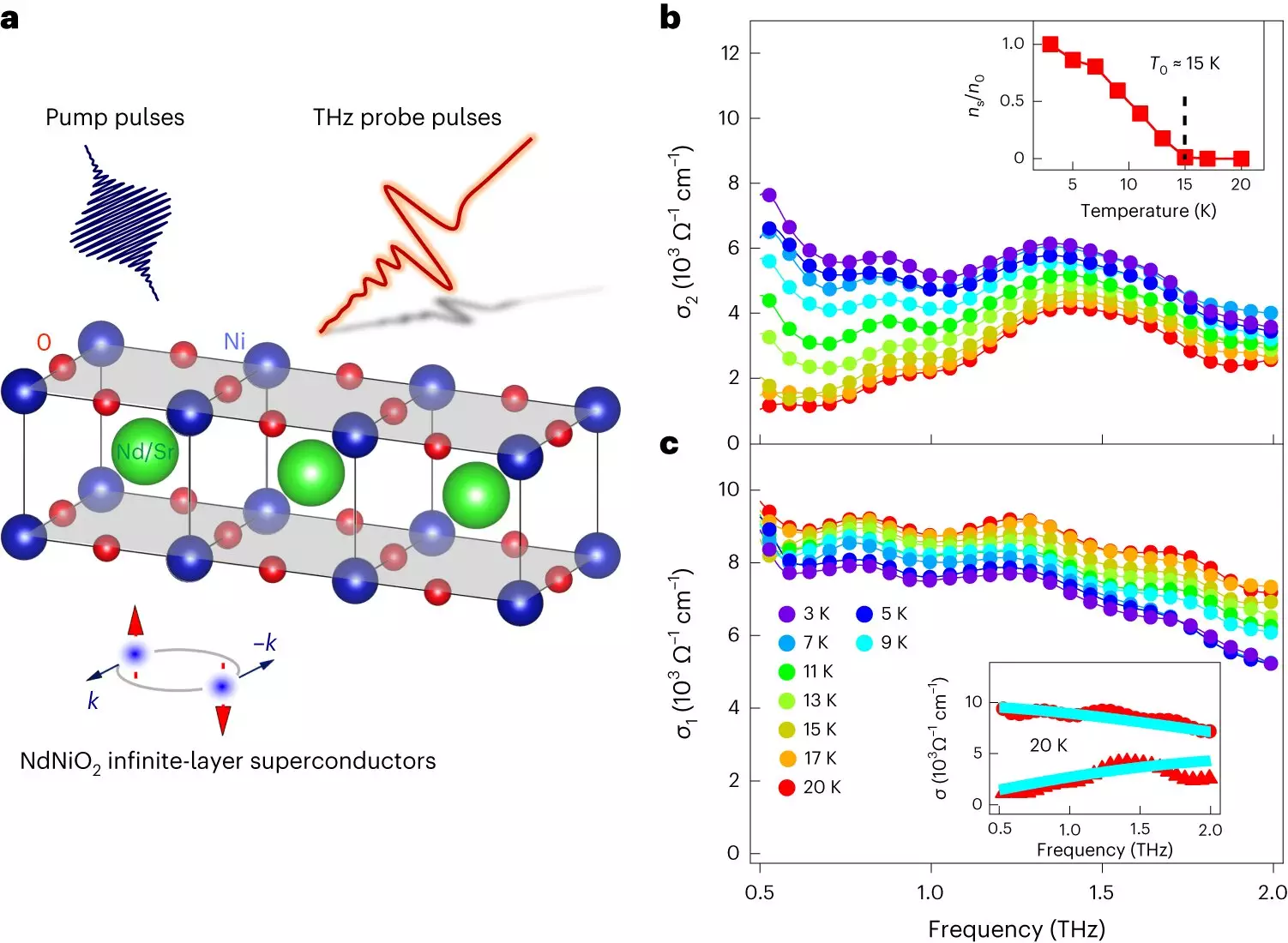Scientists from the U.S. Department of Energy’s Ames National Laboratory and SLAC National Accelerator Laboratory have recently conducted a groundbreaking study on infinite-layer nickelates. This class of unconventional superconductors has captured the attention of researchers due to its unique properties. In their paper titled “Evidence for d-wave superconductivity of infinite-layer nickelates from low-energy electrodynamics,” published in Nature Materials, the team provides new data and analysis that shed light on the workings of these superconductors and how they differ from other types.
The Distinction between Conventional and Unconventional Superconductors
Superconductivity is the phenomenon in which certain materials can conduct electricity without any resistance below a critical temperature. The practical applications of superconductors range from MRI machines to quantum computers. There are two main types of superconductors: conventional and unconventional. The critical temperature, at which superconductivity occurs, sets these two categories apart. Conventional superconductors typically operate at extremely low temperatures, while unconventional superconductors have higher critical temperatures, albeit still very low.
Superconductors display distinct electronic behavior when they reach their critical temperature. At this point, electron pairs called Cooper pairs form, leading to the creation of a superconducting gap. This gap represents the minimum energy required to set individual electrons in motion. In conventional superconductors, the size of the gap remains consistent in all directions, as in the case of s-wave superconductivity. However, unconventional superconductors, such as infinite-layer nickelates, exhibit a gap size that can vary depending on the direction of electron flow, known as d-wave superconductivity.
Understanding Infinite-Layer Nickelates
Infinite-layer nickelates, initially discovered by Harold Hwang at SLAC, have emerged as one of the most recent and potentially groundbreaking unconventional superconductors. These materials possess a complex and ultra-thin structure, manifesting as films on other substances. Consequently, investigating the fundamental properties of infinite-layer nickelates using conventional tools proves challenging.
To overcome this obstacle, Jigang Wang’s team at Ames Lab employed terahertz-wave spectroscopy, their area of expertise, to analyze these superconductors. Through their meticulous measurements, they were able to determine the gap sizes and observe rapid superconducting fluctuations near or above the critical temperature. The results confirmed the presence of d-wave superconductivity in the nickelates, aligning with findings on other unconventional superconductors made by Zhi-Xun Shen, a member of the research team from Stanford University.
Comprehending the nature of unconventional superconductivity remains one of the most significant challenges in condensed matter and materials physics today. According to Wang, there is still ongoing debate about the forces responsible for binding electrons into Cooper pairs. However, studying infinite-layer nickelates offers a promising avenue for solving this long-standing puzzle.
The study conducted by the team of scientists from Ames National Laboratory and SLAC National Accelerator Laboratory has provided critical insights into the unusual behavior of infinite-layer nickelates. By utilizing terahertz-wave spectroscopy, they have successfully confirmed the presence of d-wave superconductivity in these materials. Tackling the mysteries of unconventional superconductivity will undoubtedly pave the way for future advancements and practical applications in technology. The intricate nature of infinite-layer nickelates opens up new opportunities for researchers to unravel the secrets of superconductivity and further our understanding of the fundamental principles governing the behavior of matter.


Leave a Reply